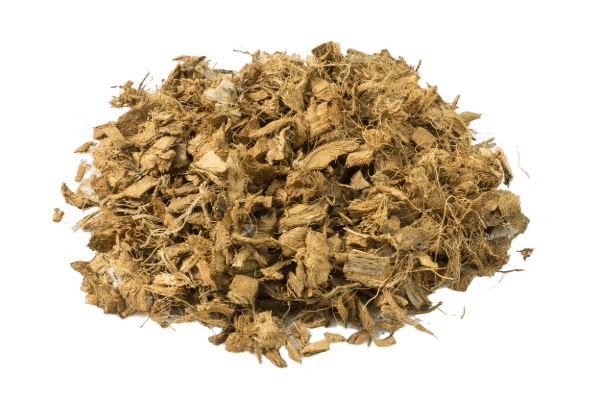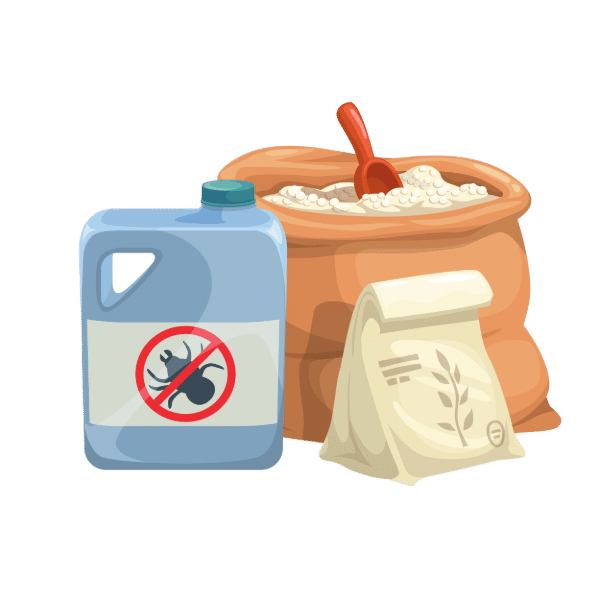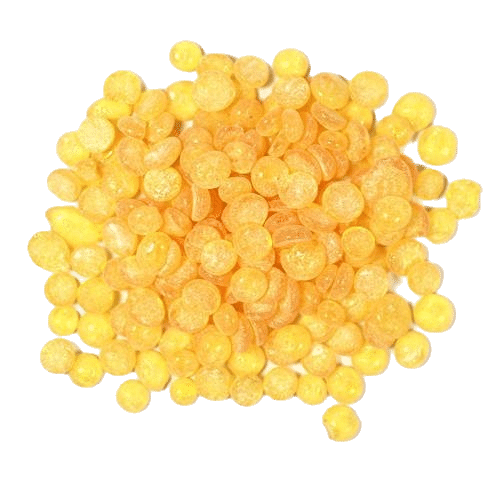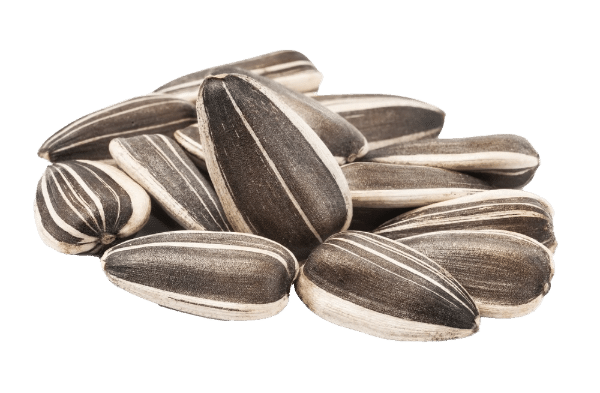When you have a tired lawn or a large expanse you want to cover with lawn fast, one possible solution is hydroseeding. Hydroseeding is a seeding and growing process for fast, efficient coverage of the area to be planted that gives quick and reliable results. But how do you know if hydroseeding will work for your application and whether it will be cost-effective in comparison to other methods of planting?
Hydroseeding is an effective means to seed a lawn over a large area to get an even distribution of seed and an improved germination rate of the seeds. The seeds are sprayed onto the ground in a slurry containing growth stimulating ingredients. The cost of hydroseeding averages $700 - $1000 per 5000-square foot (typically residential yard). On a per square foot basis it is 14 cents - 20 cents. The price goes down on a square footage basis as you have a larger area.

Hydroseeding is more expensive than seed broadcasting but cheaper than laying down sod. The price of hydroseeding can vary depending on the ingredients included in the slurry mix. Many hydroseeding companies will have a minimum price for any area below a certain size, but for large areas, they are willing to give a more competitive rate. For some, the minimum size is 2000 square feet, and for this size or smaller, you will pay about $400 for a seeding. For areas over 1 acre, a discount will normally be offered. Homeowners can expect to pay between $700 and $1 000, depending on the mix for a typical 5000 square foot lawn seeding. This pricing averages out to between $0.14 and $0.20 per square foot. (Related: How Much Does It Cost To Replace A Lawn?)
There will obviously be differences in costs for hydroseeding from region to region, and if additional ingredients are included in the slurry, the price can vary.
Depending on the condition of your ground, the hydroseeding company may require that the ground is prepared beforehand with a rototiller to break up the top layer of soil and provide a better surface for the mixture to cling to. The ground preparation will also allow more seeds to come into direct contact with the soil, which improves the germination rate. This ground preparation would be an additional cost that you would need to consider. Most hydroseeding companies will offer guarantees on germination rate only, but not on the complete success of the hydroseeding. Traffic from people and pets needs to be kept off the newly seeded grass completely for at least 24-hours till the mulch dries to form a mat. After that point, activity on the area should be limited until the grass has grown to a height sufficient for it to be mowed. Generally, the time taken for the grass to get to the point of requiring its first mowing will be between 4 to 6-weeks.
What is Hydroseeding?

Hydroseeding is an alternative method of seeding or planting and can be used for flower beds, lawns, or even vegetable crops. It is used to cover large, expansive areas quickly and promote fast germination of the seeds. It is a method of seeding an area by spraying the area to be planted with a watery slurry that contains a mixture of seeds, mulch, fertilizer, and other substances to promote fast germination of the seeds. The slurry is usually pumped from a tanker truck or a tank on a trailer.
Most hydroseed slurries contain grass seed, mulch, and a water-holding polymeric additive that binds the mixture together. Not all the products include fertilizer; this is often an optional extra. A few companies make organic versions of their product with no chemicals added for weed control or growth stimulation Hydroseeding is typically used where fast growth is required and the area to be covered or planted is too large to be effectively planted by other methods. Traditional methods such as broadcasting dry seed take longer to get the seed down, and the seeds take longer to germinate. Planting a lawn with laying down sod is another alternative, but it is substantially more expensive than hydroseeding, especially when the area to be covered is expansive.
Is Hydroseeding Better Than Seeding?
The regular method of seeding is called broadcast seeding and is a process where the dry seed is scattered by hand or, in some cases, by machine.
Seeds that are distributed in this way can result in some problems for the proper coverage of the area.
Seeds broadcast by hand will not be evenly distributed across the surface, which will result in patchy or uneven growth of the lawn.
Lawn seeds are light, which means that the wind can interfere with the broadcast seeding method and blow the seeds away from their intended location during the seeding process.
When seeds are broadcast on a slope or uneven ground, the seeds will tend to roll towards the lowest point. This results in an accumulation of seeds in these low points and very little on the slopes, where you want the grass to grow to prevent erosion.
Dry seeds can float on water, so when you water in your freshly broadcast seeds, you could carry the seeds away with the flow of the water. The water will flow towards the lowest points of the landscape, depositing most of the seeds in these locations. This will result in patchy lawn growth and distribution.
Spreading dry seeds with a seeding machine is difficult on slopes since the machines are designed to work more effectively when they are level. The seen inside the machine will fall to one side, resulting in uneven distribution across the slope's surface.
Dry seeds require more frequent watering to promote germination and the germination time is longer due to the additional time required for the seeds to absorb the moisture and begin growing.
Seed broadcasting is a time-consuming, labor-intensive operation that could take hours or days to complete, depending on the size of the lawn area to be seeded.
What is in Hydroseed Mixture?
The recipe, so to speak, of what is contained in the hydroseed slurry mix can vary depending on the intended purpose of the grass, the germination period required, and the ecologically sensitive nature of the area being treated.
Most slurry mixes will have the following components.

The mulch component of the slurry may be made from various organic materials such as wood chips, newspaper, or corrugated cardboard. Some hydroseed mulch may include synthetic poly-based fibers or natural agricultural fibers, paper mill sludge, sawdust, or a combination of these materials.
Each mulch ingredient has its own performance characteristics and can affect the cost of the hydroseed application. Certain materials simply perform in the role of mulch much better than others.

The type of fertilizer used in the slurry can be any combination of necessary compounds. A local hydroseed operator will often know the best fertilizer combination for the area. Some will do soil testing of your soil to determine the best fertilizer mix for your soil type.

The tackifier is normally a granular or powdered glue that acts as a binding agent to keep the mulch and seeds together and bind the slurry to the soil surface. The quantity of the tackifier used will be determined by the slope of the ground and how susceptible the soil is to erosion.

Water is used as the mixing agent to maintain a certain consistency of the slurry so that it can move easily through the pump and pipes for the application process. The water also soaks into the seed to prepare the seed for germination.

Several seed varieties can be used for seeding lawns, the most common being bluegrass, fescue, ryegrasses, Bermuda, Bahia, centipede, native grasses, to name a few. Hydroseeding does not require any seed or any special treatment of the seeds.
Of course, grass is not the only seed type that can be used. This process can be used to seed wildflowers logan indigenous vegetation, food crops, and even a mixture of various seed types.
A dye is often included in the slurry so the operator spraying the hydroseed can see what ground has been covered and what has not to ensure an even and complete coverage of the area.
Depending on the need or the application, certain other ingredients may or may not be included in the slurry mix. Compounds to further improve the soil, such as lime or gypsum, can be included in the slurry.
Humus to provide an additional organic component can also be sprayed with the seeds. Growth stimulators, rooting stimulators, pesticides and fungicides can all be included in the slurry mix, depending on the need.
Will Rain Wash Hydroseed Away?
Moderate rain should not be a problem for seeds that have been distributed with the hydroseeding technique if the rain only comes once the hydroseed mixture has had a chance to dry out a little. Hydroseed should only be applied if there is no chance of rain for at least a 24-hour period to give the top layer of mulch a chance to dry out.
The binding, fibrous component of the hydroseed slurry forms a solid mat on the ground when the mixture dries. This fibrous mat prevents the seed from being washed away by water from rain or when the grass is watered. The mulch also helps to prevent the seeds from being blown away by the wind.
However, the hydroseed is not immune to heavy rainfall. Heavy rain or thunderstorms that deposit a lot of rain in a short time can wash away the hydroseed.
Does Hydroseed Need Watering?
The fiber used as a mulch in the hydroseed mixture contributes to water retention, and it holds the moisture very well for some time after the distribution of the hydroseed. This means that a hydroseed lawn needs less initial watering and care than if you had used dry seed. However, the hydroseed slurry will eventually dry out if it is not kept moist, so it should be given periodic irrigation to maintain the moisture level.
The fibrous material in the slurry breaks down much faster than other mulches, such as straw used to cover seeds that are broadcast in the traditional manner. This means that your watering frequency should increase after germination to make sure the seedling grass has a chance to develop a deep root system. You should, therefore, slowly increase the watering frequency after germination until you are watering on your regular schedule for your lawn.
How Long Does Hydroseed Take to Grow?
One of the intended features of hydroseed is a faster germination time to get the lawn established quicker. The additional moisture-holding characteristics of the slurry help to provide the right, moist environment to promote germination of the seeds.
The seeds have also been sitting in the moist environment for some time in the tank before being distributed on the ground, giving them a chance to absorb the moisture. Many hydroseed mixtures contain additional chemicals and substances to stimulate the seeds to grow. This not only promotes faster germination but also promotes a higher germination rate of the seeds. This results in more of the seeds germinating, leading to a higher density lawn in a shorter space of time. You can expect the hydroseeds to germinate within 1-week to 10-days after the hydroseeding, but this will depend on local conditions and the types of seeds used.
Within the timeframe of 3 to 4-weeks, the grass is usually long enough and well established enough to start mowing the grass to maintain it at a low height and encourage thickening of the grass.
This fast germination and growth are some of the main reasons that hydroseeding is chosen above other seeding methods, especially in time-sensitive applications such as erosion prevention.
Can you Hydroseed over Existing Grass?
This question has a yes and a no answer. Hydroseeding works to get the seeds in contact with the bare soil and protect them with the mulch. Existing grass can prevent the slurry mixture from reaching the soil beneath, limiting the success of the hydroseeding. Certain steps, such as using a thinner slurry mixture, can be used in some circumstances, providing the necessary penetration of the slurry mixture to the soil beneath.
The slurry also has the potential to cover the existing grass, smothering it and causing it to die. For these reasons, it is not normally a recommended practice to hydroseed over an existing lawn. If your lawn is patchy, the recommended strategy is to rip up the existing grass and start over with a complete hydroseed coverage.
If you want to keep your existing lawn in place, your hydroseeding contractor could adapt their spraying pattern to only cover the sections that need additional growth, but the cost of this may not warrant using hydroseeding as a solution for your problem. In this case, you may do better to perform an overseeding process which involves using a power rake to get deep into the soil and then broadcast the seed by hand. Cover the seed over with a normal leaf rake and finally fertilize and water.
What is the Best Season to Hydroseed?
The time of year that most hydroseed operators recommend for using this technique is in the spring or the early fall. What you are looking for from a season point of view is when you will be getting some light rain to help your seeds germinate and then grow, but not so much ran that the hydroseed gets washed away.
The optimal time of year to hydroseed will vary from place to place in the country, depending on your rainfall patterns. It is not advisable to hydroseed in winter since the grass becomes dormant and will not grow at all and may not even germinate. Hydroseeding too late into the fall may result in the seedlings being too small when winter arrives, and the frost or cold may kill them off. It is best to query this aspect with a local hydroseeding operator to establish the best time of year in your region to seed your lawn in this way.
Advantages and Disadvantages of Hydroseeding
Hydroseeding was developed as a method to grass the steep embankments and slopes of the Connecticut highways and expressways more effectively. The method has been in use for this application since the 1940s when it was discovered by an employee of the Connecticut Highway Department, Maurice Mandell.
The hydroseeding method offers several advantages over the traditional seeding methods.
Even seed distribution
The seed is sprayed onto the surface of the ground, evenly distributing the seeds across the area. The slurry is often dyed green so that the operator can see where the spray is being laid down to ensure complete coverage of the area.
Hydroseeding helps prevent erosion
Because the germination time is fast and the slurry sticks to slopes, this method of seeding is often used as a strategy to counter erosion. If the area is seeded before the rains come, the grass seeds will have time to become established and their root system developed sufficiently to hold the soil in place. Once the rains come, erosion will be less of a problem because the plants are already well established.
The wind is not a factor
The slurry that the seeds are pumped out in is a heavy mixture, which is not easily blown by the wind during the spraying of the slurry.
Short germination time
Hydroseeding contains the seeds in a moisture-rich slurry, which promotes the germination process while the slurry is in the tank and before it is sprayed in your yard. The slurry often contains a fibrous material designed to lock moisture around the seeds to prevent them from drying out after they have been distributed and promote germination. Some slurry mixes have growth chemicals included to stimulate the germination of the seeds. All these factors contribute to a fast-germinating time of about 1 week.
Not washed away by water
The seeds in the slurry are combined with a tackifying agent that makes the seeds and the slurry stick to the ground surface. This makes the seeds stick to the surface and prevents them from being washed away when the ground is watered.
Uneven ground is easily covered
Slopes and uneven ground are easily covered with the slurry. The slurry is thick enough that it does not run down a slope or accumulate in dips in the ground. This ensures an even distribution of the seeds, even on rough, uneven, or sloped landscapes.
Made for seeding slopes
Seeding slopes is not a problem with the hydroseeding method since this is the exact reason that the method was developed. The method of delivery via spraying allows the slurry to be deposited in hard-to-reach places, and the mixture will stick to the ground on slopes, preventing the seeds from rolling down to the low points of the landscape.
Not labor-intensive
The distribution method of spraying is fast and large areas of ground can be covered quickly, making this a very labor-efficient method of planting grass.
Versatile application
Hydroseeding is a versatile method of seeding that is not only limited to lawns and grass. It can be used to spread wildflowers, ground covers, and even re-establish vegetation in areas where fires have devastated the landscape. Re-planting fire-damaged areas using this method will help the area to recover faster and prevent erosion after the fire. When seeding large areas after a fire, the hydroseed slurry can be delivered via helicopter or fixed-wing aircraft designed for this purpose.
As with any form of planting, there are disadvantages to the system as well. For some people, these disadvantages will be a deciding factor that prompts them to choose one of the other seeding methods instead.
It is outsourced
There is no DIY option for hydroseeding. The cost of high pressure, high volume sprayers that are for a once-off application does not make financial sense. Consequently, you need to hire a company to come out and do the hydroseeding for you.
It is not an instant solution
Another method of establishing a lawn is to lay down sod. This gives you an instant lawn once the sod has been put down. You will not get these instant results using the hydroseed method. It will take some time for the grass to grow and fill out.
Potential for failure
The ground needs to be well prepared to accept the seed mixture. The seed cannot sit in the mixture in the tank for too long, or it could absorb too much moisture and rot rather than germinate. The fertilizer in the mi can also burn the seeds if they stew in the mixture for too long. All these factors mean that there needs to be some precision to the process to ensure success.
Availability
Hydroseeding operators are not available in all locations. Smaller towns may not have an operator in the neighborhood. This will increase the cost of hydroseeding if the company has to travel some distance to perform the seeding.
While this method has some problems, it remains an effective method to seed lawns, especially in residential applications.
Conclusion
Hydroseeding is an effective method of seeding a lawn, but it is generally only appropriate and affordable for larger expanses of ground. Smaller areas should be seeded by preparing the ground and broadcasting seeds. In very small areas, laying down sod may be more appropriate and provides an instant lawn, which the other two methods do not.
Hydroseeding helps to prevent erosion and increases the germination rate of the seeds in the mixture, which makes this solution popular for large spaces. It is also less labor-intensive than the other methods. Costs vary from location to location, so you will need to consult a local hydroseed operator for a quotation.
